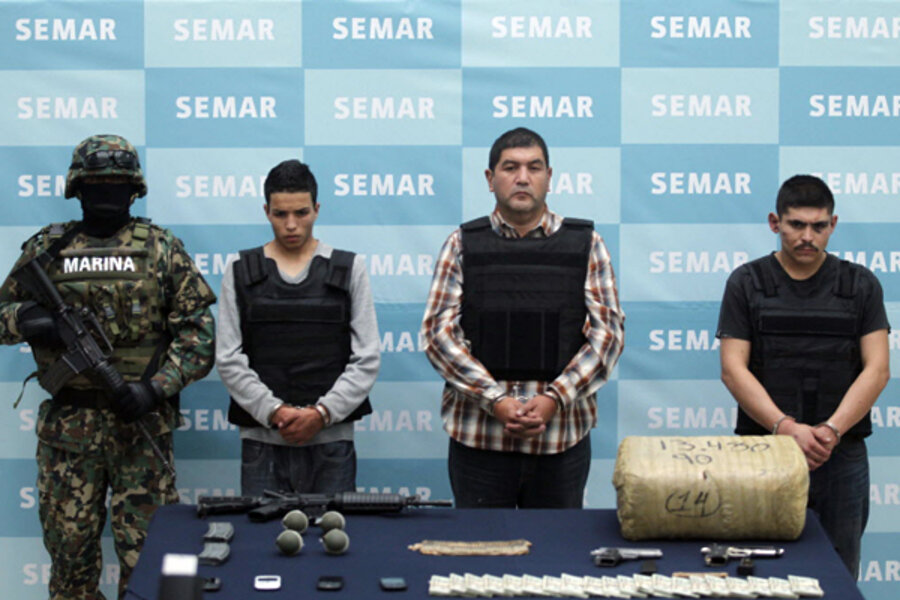Could Central American gangs usurp the role of Mexican cartels?
Loading...
• InSight Crime researches, analyzes, and investigates organized crime in the Americas. Find all of Edward Fox's research here.
Costa Rica's attorney general has warned that with the decline of Mexico's powerful cartels, Central American gangs could rise and take control of criminal operations in the region – an extreme but not implausible scenario.
In a recent interview with El Universal, Costa Rican Attorney General Jorge Chavarria warned that Central America’s criminal groups could grow stronger and supplant their Mexican counterparts in the region if the Mexican cartels lose power.
“At the moment, the dominant groups are clearly Mexican. But if we look 10 years ahead, what will happen if in Mexico, the fight [against crime] has a positive effect from the point of view of the Mexican state?" Chavarria said. "That is how we have to look at it in order to see how we can avoid the consolidation of Central American organizations that could replace the Mexicans.”
RELATED: Think you know Mexico? Take our quiz!
The main candidates to step into the role of Mexican cartels are gangs in the “Northern Triangle” of Guatemala, El Salvador, and Honduras. El Universal highlighted the Salvadoran Texis Cartel and Guatemalan groups the Mendozas and the Charros as among the most powerful.
Chavarria said that no Costa Rican cartels have been detected so far, but that authorities must work to pre-empt their emergence, adding, “What is very risky for us is that someone starts to develop a leadership and establish a Central American organization in the face of a vacuum [in criminal structures] as [could happen] in Mexico and Colombia.”
InSight Crime Analysis
The decline of Mexican cartels may already be underway. Last month, US Assistant Secretary of State William Brownfield announced that Mexico’s larger drug trafficking organizations were “on the verge of collapse,” thanks to sustained pressure on their operations in the region. The majority of Mexico’s large gangs, from the Beltran Leyva Organization and Gulf Cartel to the Juarez and Tijuana Cartels are now shadows of their former selves, as analyst Alejandro Hope has set out.
Brownfield acknowledged that the crackdown on Mexico’s groups means a greater risk for Central America and the Caribbean.
As El Universal points out, Mexican groups such as the Sinaloa Cartel and Zetas currently use Central American gangs as operatives to launder money, infiltrate local police and traffic drugs. If these roles reversed, Central American cartels would have to increase their presence in Mexico. This would be more difficult than it was for Mexicans to move south, as the Mexican state has far stronger institutions that the Northern Triangle. Mexican groups were able to take advantage of largely ungoverned spaces in the isthmus -- such as the north Guatemalan province of Peten -- to conduct their operations.
If Central American gangs increase their stake in the trade, they could also bypass Mexico as a transit point and traffic drugs through the Caribbean, a favored route in the 1980s. Both US officials and Caribbean leaders have suggested that the shift back to Caribbean routes may already be happening thanks to sustained pressure on drug trafficking through Central America. If drugs arrived in the United States by sea, Central American traffickers would be able to increasingly cut Mexican cartels out of the supply chain.
As Chavarria noted, these scenarios are not likely to take place in the immediate future. While Mexican monolithic criminal groups may be disintegrating, any shift of power south will take time. However, Central America's gangs, having spent years as subordinates to the Mexicans, could be well positioned to rise and take control of organized crime in the region.
– Edward Fox is a writer for Insight – Organized Crime in the Americas, which provides research, analysis, and investigation of the criminal world throughout the region. Find all of his research here.







